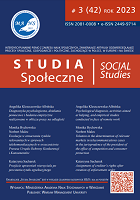Author(s): Nataliia Oleksandrivna Steblyna / Language(s): English
Issue: 51/2024
RESEARCH OBJECTIVE: The aim of this paper is to compare professional and amateur news media (Telegram) coverage of the Russian invasion of Ukraine and to determine the quality of this coverage.THE RESEARCH PROBLEM AND METHODS: The popularity of Telegram has been growing since Russia’s full-scale invasion of Ukraine. To describe the digital media environment in wartime, it is important to observe the activity of both professional and amateur media. Webpages containing news texts were exported with Python programs, and news sources were processed using regular expressions.THE PROCESS OF ARGUMENTATION: At the beginning of the digital platform era there were hopes of a symbiotic relationship between professional media and amateur digital platforms, where the latter would provide more diverse content, thus helping some ignored groups to be heard by the media. As for Telegram, it has a growing number of users and channels, but there are almost no restrictions regarding content. Thus, together with some “alternative” and “ignored” voices, production of harmful content on Telegram is observed around the world: hate speech, extremism, racism, conspiracy theories and propaganda. In Ukraine, Telegram is the most popular source of information during the full-scale Russian invasion and Ukrainians trust it, therefore its contribution to informing people should be analysed.RESEARCH RESULTS: The conducted analysis has demonstrated that popular amateur news media mostly fail to provide clear references to news sources in the war period (in March to October 2022, only every third to fifth post contained a clear reference to a news source). On the other hand, the most popular mass media and amateur mass media sources are mostly the same: media resources connected with the president and the government, verified military sources, etc.CONCLUSIONS, INNOVATIONS AND RECOMMENDATIONS: The scarcity of news sources given in Telegram posts confirms previous observations about the low quality of content on Telegram. However, in some cases Telegram channels use reliable official or professional media news sources. Thus, some additional steps are needed to improve the situation: legislative changes for Telegram channels, ownership transparency, further monitoring of content quality, and media literacy campaigns for channels’ audiences.
More...









